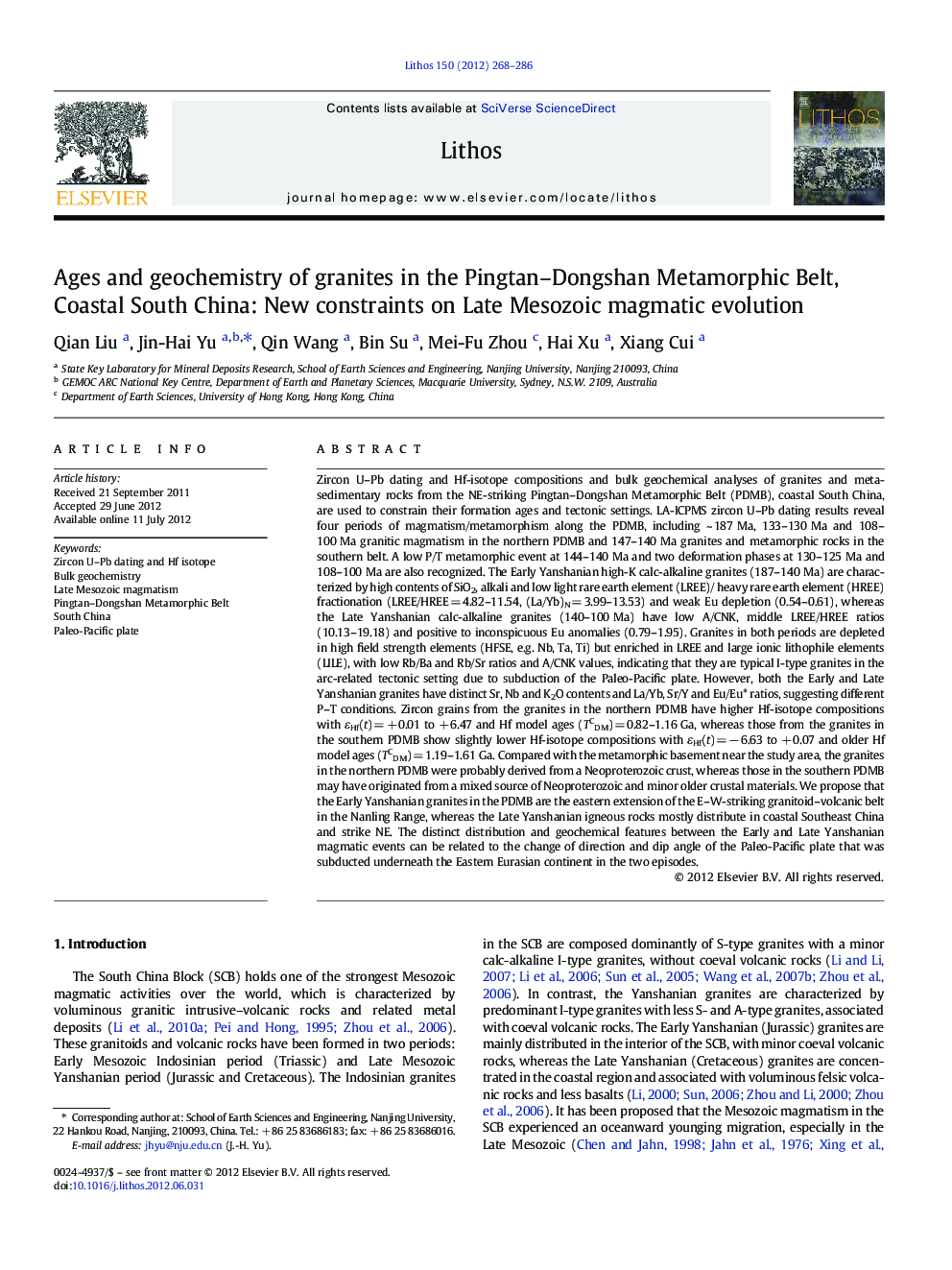| Article ID | Journal | Published Year | Pages | File Type |
|---|---|---|---|---|
| 4716502 | Lithos | 2012 | 19 Pages |
Zircon U–Pb dating and Hf-isotope compositions and bulk geochemical analyses of granites and metasedimentary rocks from the NE-striking Pingtan–Dongshan Metamorphic Belt (PDMB), coastal South China, are used to constrain their formation ages and tectonic settings. LA-ICPMS zircon U–Pb dating results reveal four periods of magmatism/metamorphism along the PDMB, including ~ 187 Ma, 133–130 Ma and 108–100 Ma granitic magmatism in the northern PDMB and 147–140 Ma granites and metamorphic rocks in the southern belt. A low P/T metamorphic event at 144–140 Ma and two deformation phases at 130–125 Ma and 108–100 Ma are also recognized. The Early Yanshanian high-K calc-alkaline granites (187–140 Ma) are characterized by high contents of SiO2, alkali and low light rare earth element (LREE)/ heavy rare earth element (HREE) fractionation (LREE/HREE = 4.82–11.54, (La/Yb)N = 3.99–13.53) and weak Eu depletion (0.54–0.61), whereas the Late Yanshanian calc-alkaline granites (140–100 Ma) have low A/CNK, middle LREE/HREE ratios (10.13–19.18) and positive to inconspicuous Eu anomalies (0.79–1.95). Granites in both periods are depleted in high field strength elements (HFSE, e.g. Nb, Ta, Ti) but enriched in LREE and large ionic lithophile elements (LILE), with low Rb/Ba and Rb/Sr ratios and A/CNK values, indicating that they are typical I-type granites in the arc-related tectonic setting due to subduction of the Paleo-Pacific plate. However, both the Early and Late Yanshanian granites have distinct Sr, Nb and K2O contents and La/Yb, Sr/Y and Eu/Eu* ratios, suggesting different P–T conditions. Zircon grains from the granites in the northern PDMB have higher Hf-isotope compositions with εHf(t) = + 0.01 to + 6.47 and Hf model ages (TCDM) = 0.82–1.16 Ga, whereas those from the granites in the southern PDMB show slightly lower Hf-isotope compositions with εHf(t) = − 6.63 to + 0.07 and older Hf model ages (TCDM) = 1.19–1.61 Ga. Compared with the metamorphic basement near the study area, the granites in the northern PDMB were probably derived from a Neoproterozoic crust, whereas those in the southern PDMB may have originated from a mixed source of Neoproterozoic and minor older crustal materials. We propose that the Early Yanshanian granites in the PDMB are the eastern extension of the E–W-striking granitoid–volcanic belt in the Nanling Range, whereas the Late Yanshanian igneous rocks mostly distribute in coastal Southeast China and strike NE. The distinct distribution and geochemical features between the Early and Late Yanshanian magmatic events can be related to the change of direction and dip angle of the Paleo-Pacific plate that was subducted underneath the Eastern Eurasian continent in the two episodes.
► Multiple granites occur in the Pingtan–Dongshan Metamorphic Belt, South China. ► Early Yanshanian and early Late Yanshanian granites have different chemical features. ► They were generated under different conditions. ► These two periods of granites exhibit different distribution regions. ► They result from different subduction directions of Pacific plate in two periods.
